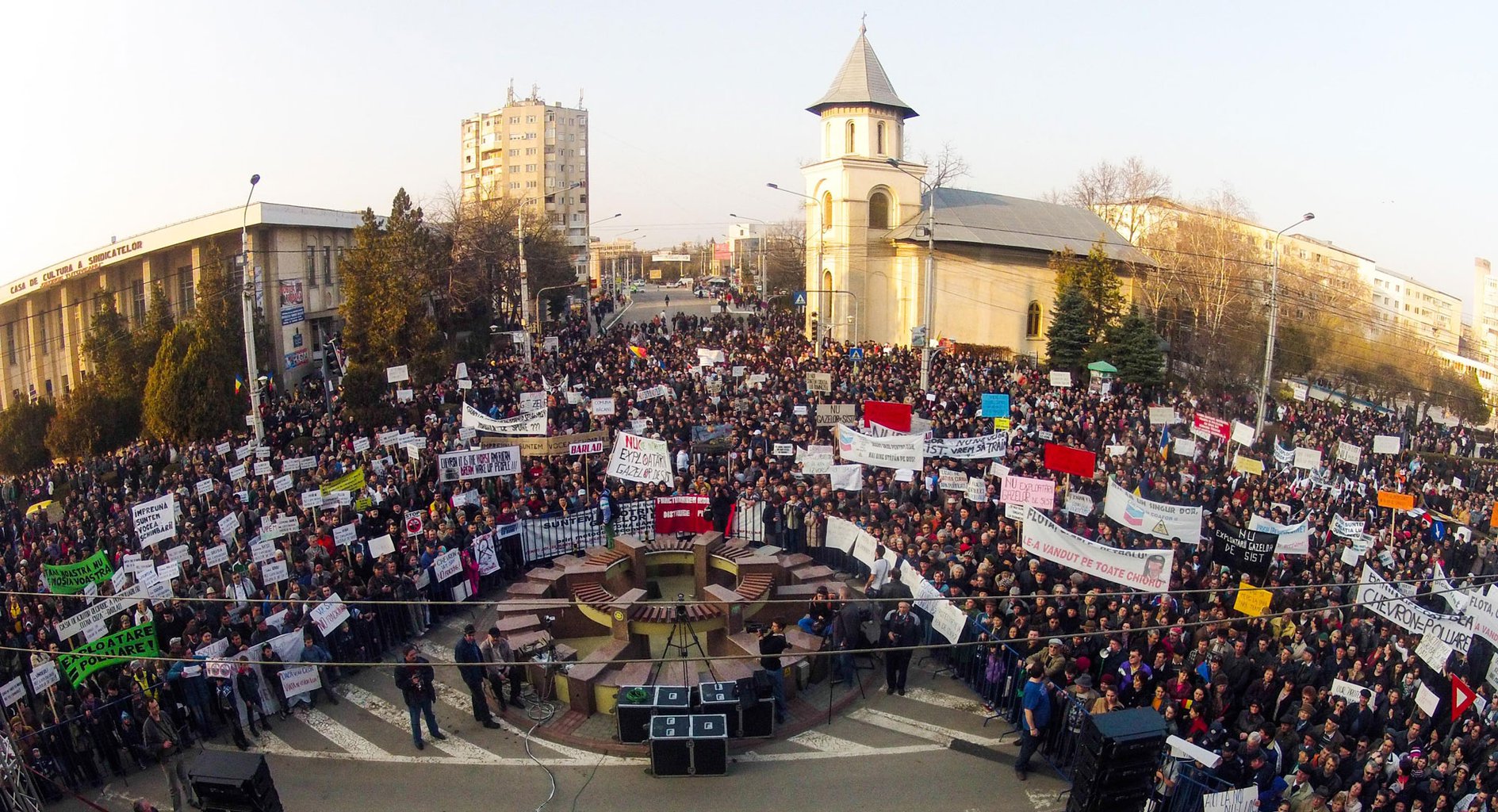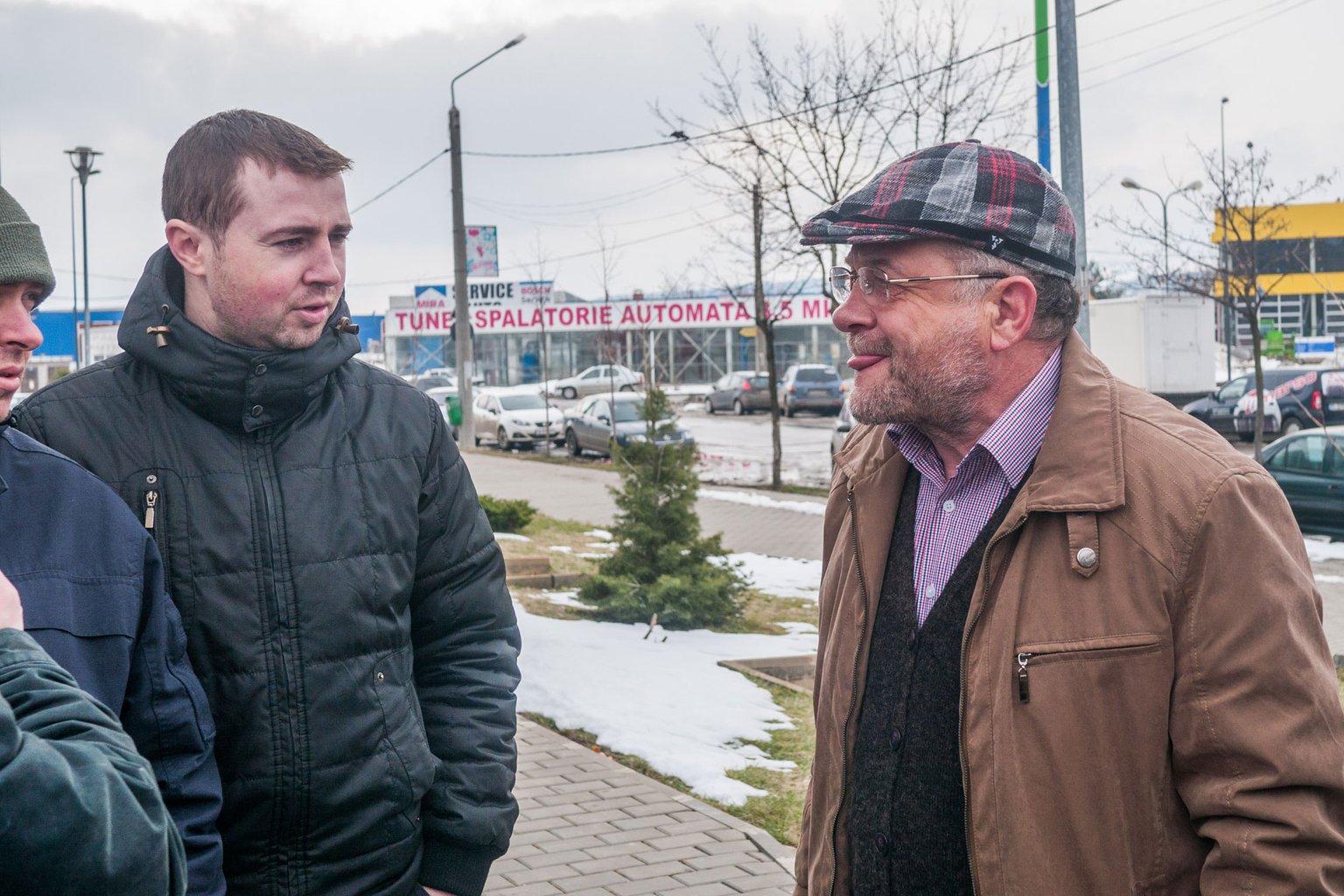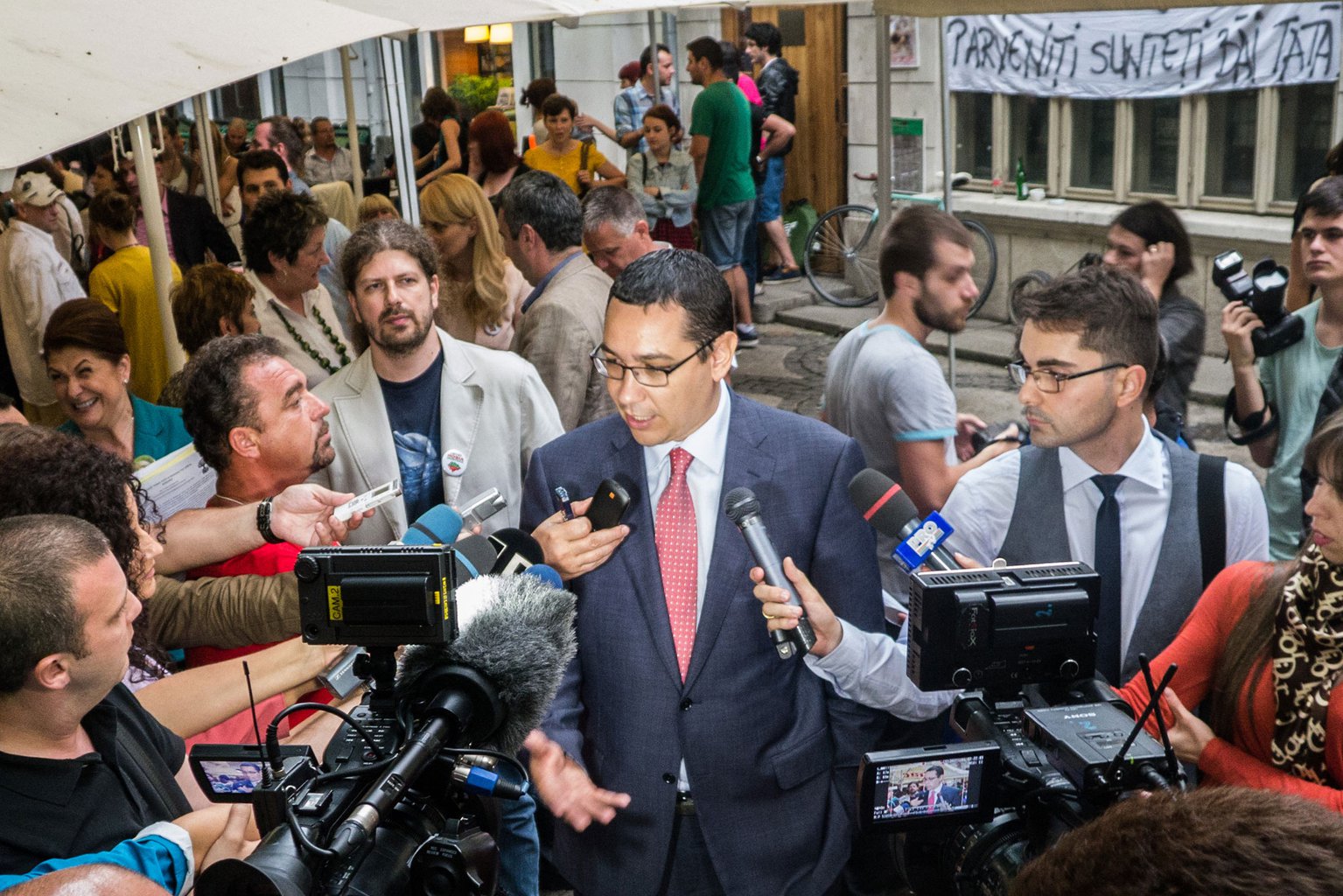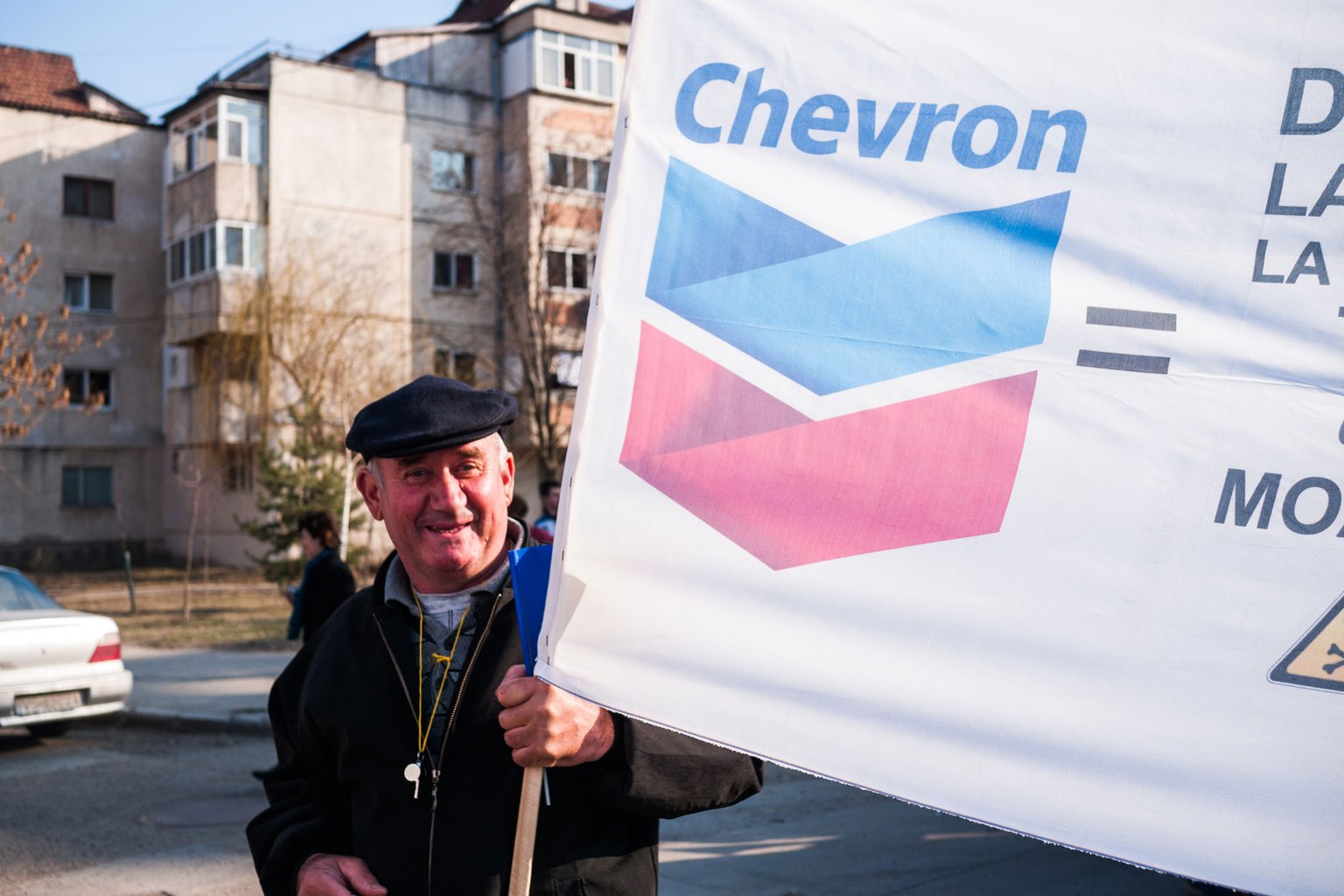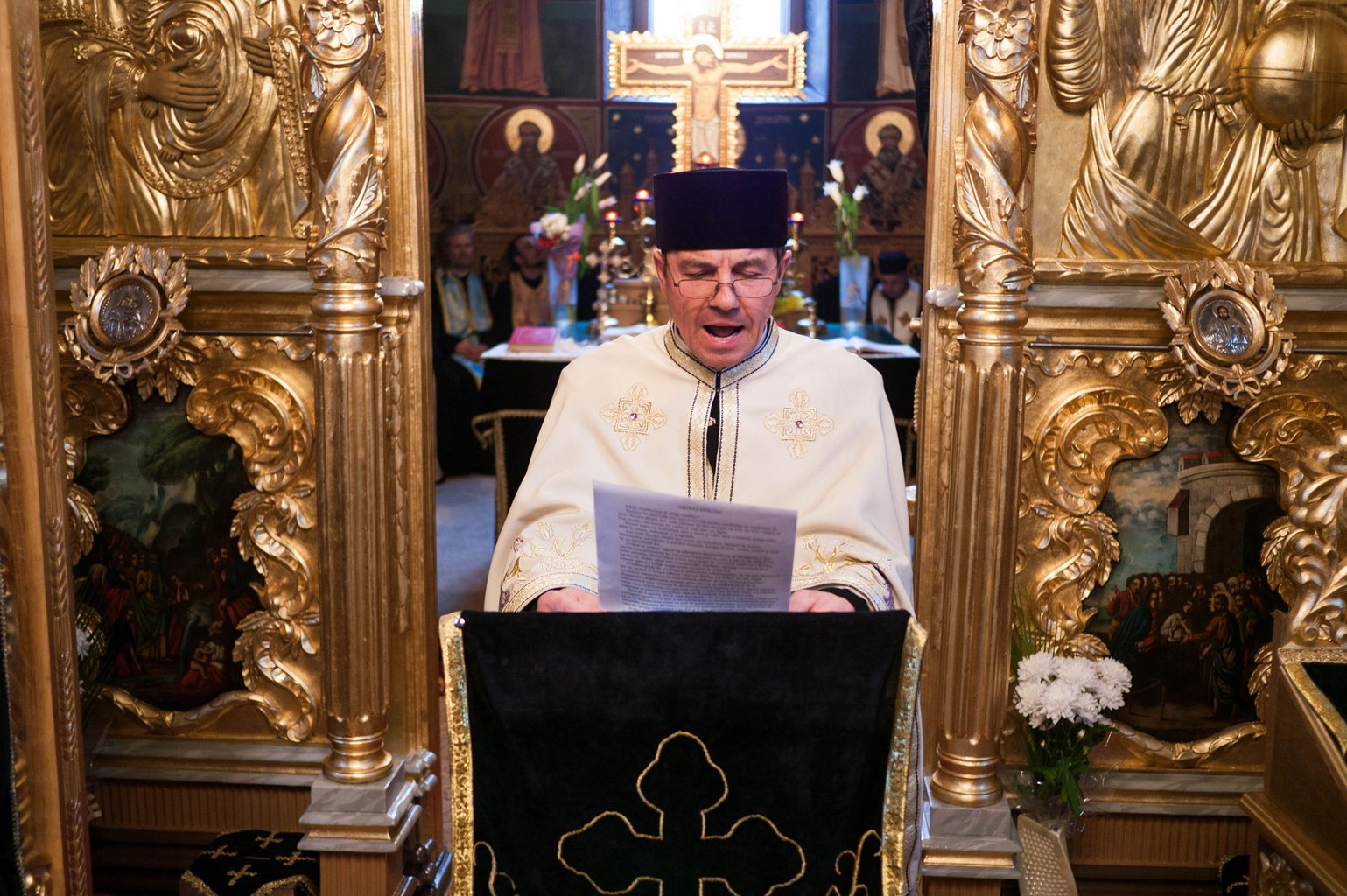Shale gas revolution risks cutting Romania a bad deal
Residents of the small village of Pungesti in east Romania are crowding into the cultural center to witness a rare event for the mainly subsistence farming community. Today they are participating in a public debate. A young Romanian with an American education in a smart shirt tries to smile while the crowd turns restless. He is attempting to convince them that allowing US energy giant Chevron to drill for shale gas in this locality would be good for their village.
But his speech only manages to stir anger and he is soon overwhelmed by yells and boos.
An old man stands up and speaks, as the crowd cheers him on. "We should be able to vote on whether we agree with this or we don’t!" he says.
"Sit down!" retorts the President of the County Council, Dumitru Buzatu, grabbing the microphone to restore order. "The Romanian Law says that the underground belongs to the state. And no one will ask what you think!"
A year ago, before the local elections, the same council official stood on a stage and urged thousands of protesters to oppose shale gas.
"I will always be here to say ‘NO’ to Chevron and ‘NO’ to drilling," he said at the time.
But since his reappointment, Buzatu has switched to became a sort of unofficial spokesman for the American multinational, translating corporate lingo into angry bellowing at the very people who elected him.
This volte-face of views on a controversial subject is happening not only at a local level.
Romanian Prime Minister Victor Ponta, newly elected in 2012, has said one of his main objectives is to start drilling for shale gas.
But last year, when he was the head of the opposition, he strongly criticized the Government for the same policy, which he described as "giving away what’s left of Romania’s resources".
After winning the elections he called for giving Chevron the right to drill. “Now I’m fighting for shale gas and I think I’m doing the right thing,” he said in an interview in June, after urging his ministers not to be influenced by anti-fracking protests.
Annoyed it has to import expensive natural gas from Russia, Romania’s strategy of becoming energy independent will include turning over its resources to American multinationals, starting with Chevron.
Politicians from all the major parties put away their differences after the elections in a joint effort to push for drilling, even though they admit the royalties are small and the potential damage is unknown.
US companies are happy with Romania’s investment climate, as the royalties they will give to the state are low and the regulatory system is light for a controversial extraction technique that involves pumping a high-pressure mix of water and chemicals into the gas-bearing rock, creating tiny cracks and forcing the gas up a cement pipe.
Meanwhile the Romanian are the most hostile people to fracking in the EU - alongside France, which has banned the process in its territory. Over 70 per cent of Romanians polled expressed total opposition to shale gas development, while the rest argued that they would agree only if better health and environment safeguards were put in place, according to a public consultation by the European Commission.
Many believe that the benefits are too few compared to risks such as the extraction process contaminating the water supply.
A survey conducted in April found that 41.5 per cent of Romanians thought shale gas exploitation was a threat, 21.9 per cent considered it safe, 16 per cent didn’t know how to answer and the rest had never heard of it.
Fracking has sparked one of the largest protest movements in Romania, rooted in ecologist feelings and a wide distrust of politicians and government. The communist era saw a forced industrialization that led to many environmental disasters that still plague the country and the people are not convinced that the current political class will be more responsible.
The small town of Barlad in the poor region of east Romania saw the largest protests any of the locals can remember. Not even the anti-communist revolution of 1989 brought so many people out into the streets. Among the five protests in the last year and a half, media reports estimate the largest attendance was 8,000 people in a town of 50,000.
The people of Barlad care about their drinking supply. The town’s coat of arms features three fish on a blue background. There are 20 public fountains spewing sulphur-rich water that people consider good for their health. Their tap water comes from reservoirs miles away, which they fear could be contaminated by fracking. During their protests, a typical sign read “Don’t kill our water! Don’t kill our children!”.
Their worries are not just a sentimental reaction. More than half of the country’s water resources are already contaminated, according to Romania’s National Strategy for Sustainable Development. There are 2,660 cubic meters of water available per capita each year, well below the European average of 4,000 cubic meters. Areas that rely on subsistence farming, such as Barlad, are the most vulnerable to water shortages.
Extracting shale gas requires between 2,000 and 10,000 times more water than conventional gas, according to the International Energy Agency. Each well consumes 500 truckloads of water, about 15,000 cubic meters.
Water is about 99 per cent of the fluid that is injected underground to make tiny cracks in the rock that holds the gas. The rest is a mixture of chemicals.
A report by the U.S. House of Representatives Committee on Energy and Commerce found that “between 2005 and 2009, the oil and gas service companies used hydraulic fracturing products containing 29 chemicals that are known or possible human carcinogens, regulated under the Safe Drinking Water Act for their risks to human health, or listed as hazardous air pollutants under the Clean Air Act.”
Although they represent only one per cent of the fluid, this still amounts to about 150 tons of chemicals for each well.
An investigation by the National Public Radio in the U.S. in 2012 examined the records of 8,982 fracking wells in Pennsylvania and found 3,025 violations reported by the Department of Environmental Protection in a 2.5-year interval. That means one violation for every three wells.
Not all transgressions resulted in contaminated water. There were 143 cases of “Discharge of pollutional material to waters of the Commonwealth”, 90 cases of “Failure to properly control or dispose of industrial or residual waste to prevent pollution of the waters of the Commonwealth”, 44 cases of “Improper casing to protect fresh groundwater” and other violations.
“The recorded violations of legal requirements amount to about one to two per cent of all drilling permits. Many of these accidents are due to improper handling or leaking equipments,” stated a 2011 report by the European Parliament.
The land required by drilling is also a challenge: unlike conventional gas, exploiting shale gas requires a large area of tightly spaced wells to be profitable. The drilling density can exceed one well per 60 acres, states a report by 3legs Resources, an independent oil and gas company with leases in Poland.
There is a strong feeling among Romanians that they are victims of history, forever trapped on the outskirts of empires and exploited like a colony. The current system of taxes and royalties does not help to dismiss these worries.
The royalties for shale gas extraction in Romania are among the lowest in Europe and none of them will reach local communities. The money will instead go to the state budget of a country still facing tough EU monitoring of its legacy of corruption at a national level.
“The current system of leasing and payment of a royalty has not been proven to be advantageous,” says Gheorghe Manea, an economist who studied development strategies for the Romanian Academy. “The total revenue from royalties is insignificant for the state budget.”
Romania’s graft level compares to that of Saudi Arabia, according to Transparency International, so few expect that the royalties will be efficiently used.
The energy companies must pay between 3.5 and 13 per cent of the value of the gas they extract, depending on the output, plus a 16 per cent income tax. This adds up to 19.5 to 29 per cent from the revenue.
In the U.S., companies must pay over twice this figure - between 47.5 and 65 per cent, plus initial bonuses for the landowners. In Norway this rate is 78 per cent.
However there are voices in Romania who claim this level is too high. Alexandru Patruti, the former head of the Romanian Mineral Resources Agency, which signed the contracts with Chevron, claimed that the royalties should be even lower, because the technical process of hydraulic fracturing and horizontal drilling is more complicated than a conventional operation.
“We have these small royalties because they were established at a time when all the companies were state-run, and the state didn’t care [about how much it was receiving],” says Ana Otilia Nutu, energy analyst at Bucharest-based think tank Expert Forum.
Prime Minister Ponta has said he plans to increase the royalties in 2014. But it is unclear how the 30-year contract with Chevron can be changed retroactively. Several lawyers, as well as Government employees, have mixed opinions on whether such amendments are possible.
“It’s ultimately a political negotiation,” said one lawyer who asked not to be named, for fear of being associated with the Chevron contracts.
In Poland, the Government tried to increase the shale gas taxes to 40 per cent - a still lower rate than the amount western countries charge. But the companies protested. US energy giant Exxon sold its Polish leases, while Chevron threatened to do the same, so the authorities dropped the tax increase.
The politicians’ main argument for promoting shale gas is that it will help the country towards energy independence from Russia. Romania produces three quarters of its gas needs and imports the rest from Russia at a high price. The Romanians are not satisfied with this deal and are historically distrustful towards their eastern neighbor.
"I’m not in a war with Russia, but I want my country to depend as little as possible on gas imports," said Victor Ponta in an interview with Hotnews.
Meanwhile the Prime Minister’s political arch-enemy, President Traian Basescu, has backed up his fellow leader’s point of view.
"We would have to make some concessions to the Russians to lower the price [of gas imports] and I’m not ready to make these concessions," said the President in a recent meeting with his Facebook fans. "Between certain risks and energy independence, I say yes to shale gas, without knowing much about the risks."
But Romania is one of the least energy dependent countries in Europe. "Energy independence is one of the few areas in which [Romania] can stand tall," said Iulian Iancu, head of the Economy and Industry Commission in the Chamber of Deputies, in an interview in March.
While the current gas basins will be depleted in 20 years, Romania still has plenty of natural resources it can use in the future. Dobrogea, the hilly region on the Black Sea shore where Chevron acquired shale gas leases, is one of the best places in the world to set up wind farms, according to an Ernst & Young report. The wind farms now active in the region account for around eight per cent of Romania’s electrical energy output - from a base of zero five years ago.
170 kilometers to the east, in the Black Sea, Exxon has partnered with Romanian companies to explore offshore natural gas deposits. The first results estimate one deposit holds about 100 billion cubic meters of gas - enough to fuel Romania for seven years, according to the President of Romania, and there are five more perimeters to be explored.
Romania is also pursuing alternative sources of imported gas from the Caspian Sea region, tapping into Azerbaidjan’s rich resources of hydrocarbons through the proposed liquefied natural gas corridor AGRI.
Shale gas is not limited to the four perimeters leased by Chevron. Companies such as the Hungarian energy group MOL have acquired gas leases in Western Romania. The National Mineral Resources Agency denied this lease has any connection with fracking, but some of the companies involved in these contracts have posted on their websites that they intend to drill for shale gas if the conditions are right, which mainly depends on how the deal with Chevron will turn out.
Meanwhile in Barlad, the people have lost all hope of support from politicians and have instead asked the Church for help.
Local Orthodox priest Vasile Laiu has become the leader of the protests, shouting rhymes through a megaphone and saying prayers on stage. At the end of one of his sermons, he stands in front of the altar and reads a mesmerizing speech against the "contemporary invaders":
"You can make this parallel: an invading army and foreign corporations; enemy chieftains and corporate managers; traitors and lobbyists."
The people calmly listen to him, grab protest banners and head towards the City Hall, where riot police are already waiting.
The foreign threat has activated the survival instincts of the Romanians and these people are unlikely to give up their resistance. But with the contracts spanning three decades and the Government showing no sign of stepping back, it will be a long fight.
Follow us
